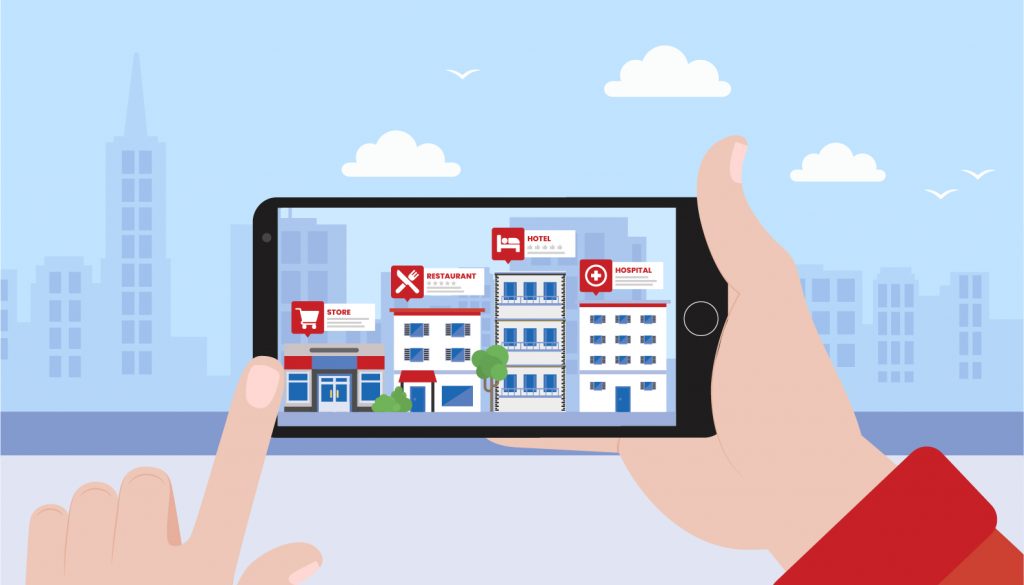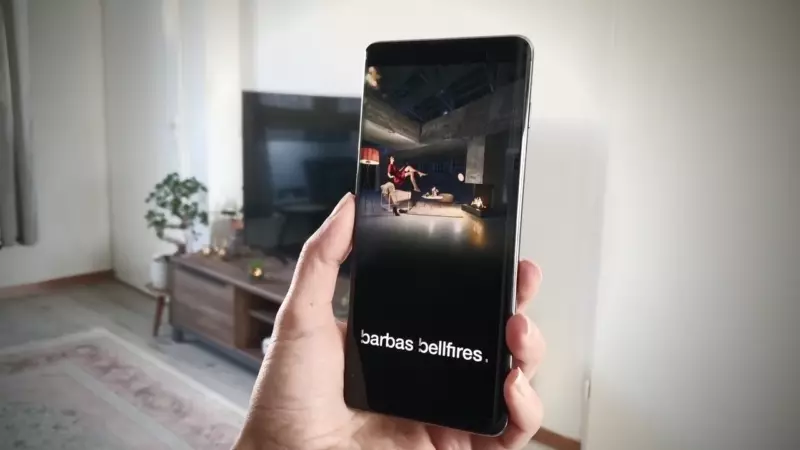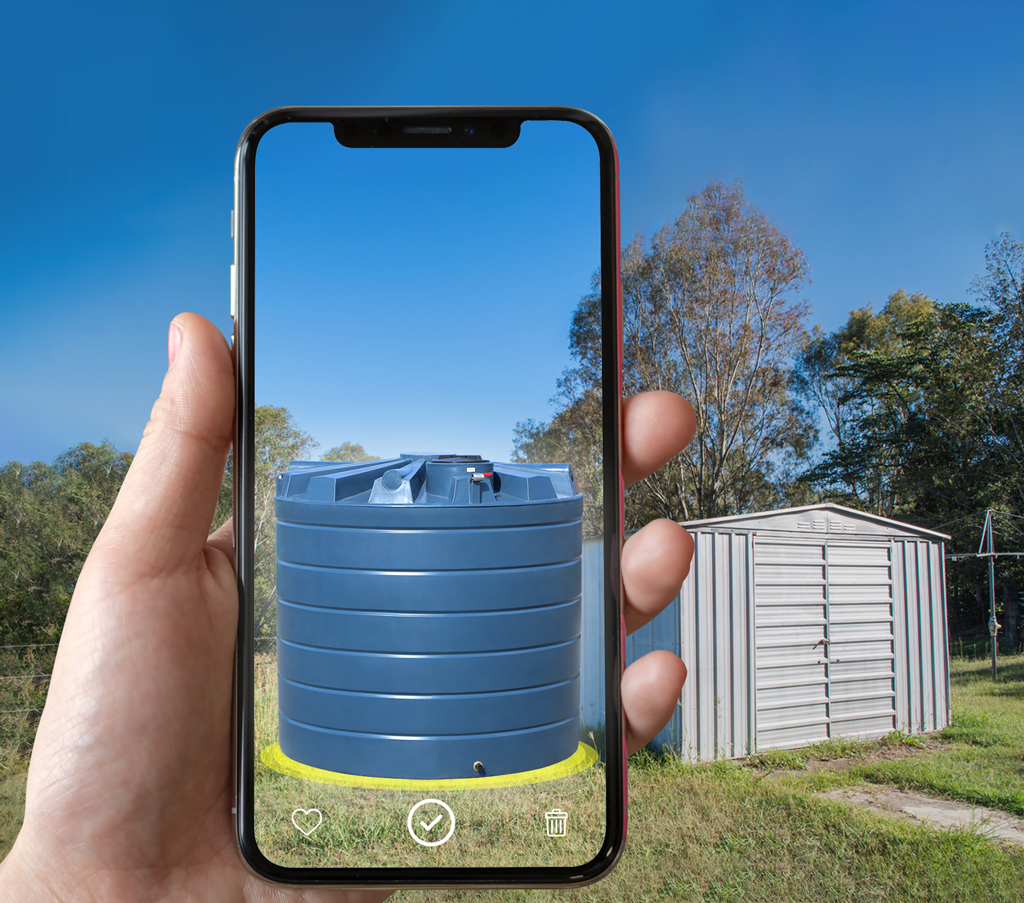
How Augmented Reality (AR) Is Reinventing The Customer Experience!
Julian Wallis
14 min read

No doubt, augmented reality is a hot topic these days, but what‘s so exciting about it?
And how can businesses use it to improve customer experience? Read on to find out more!
Introduction 🧐
Augmented reality (AR) is a technology that has been making waves in the business world. As businesses are always looking for new and innovative ways to improve their customer experience, AR is poised to play a significant role in the future. It would make sense for more businesses to adopt this ground-breaking technology, wouldn‘t it?
AR technology is based on the premise of creating an interactive digital overlay on top of the physical world. While primarily considered a fun, playful gimmick to this point, there‘s a lot more than that.
From a business point of view, you can use AR to provide customers with information in a unique and engaging form, enhancing their shopping experience entertainingly and memorably.

Needless to say, businesses that are early adopters of augmented reality will be able to set themselves apart from their competitors and provide a more immersive customer experience.
But you might be thinking, how can augmented reality even be utilised, and what is it, in the first place? No need to worry because, as always, we‘ve got you covered.
This article will analyse the AR technology in great depth and provide some specific use-case examples of this technology reshaping the world of marketing and customer experience.
Ultimately, we‘ll provide some key takeaways for using AR specifically in your business. So, without any further ado, let‘s get started!
What Is Augmented Reality? 🤔
AR, or augmented reality, is a technology that brings computer-generated images into our real-world surroundings. Want to see this technology in action? Then, just do a quick Google search on your smartphone, look for “Bengal Tiger,” and click on “View in 3D.” You‘ll now find a virtual tiger prancing around in your backyard; how cool is that? And, don‘t worry, this one won‘t eat you!

On a more serious note, AR has many potential applications and can be used in many practical and innovative ways in education, product visualisation, training simulations, and so much more.
AR technology is a scarce and unique concept as it allows users to interact with digital content in a more natural and immersive way and thus has the potential to revolutionise the way we interact with the world around us.
Imagine this, the year is 2050, and you just had a conversation with your partner‘s hologram. How would engineers develop technology like that, you ask? Through augmented reality, of course! Holographic projections are a form of AR; when you technically think about it.
But we‘re not in 2050, it‘s still 2022, and while AR is still in its early stages of development, it shows great promise as a transformative technology.
Some Real-Life Examples Of Augmented Reality ✌️
Until now, Augmented Reality has been used predominantly in the video gaming world, but recently it has been adopted in various industries, from training and education to retail and fashion.
An excellent example of an early adopter of AR is Snapchat. It uses AR technology to encourage users to have fun with selfies and group photos through filters that enable brands to promote their products. You must‘ve seen millennials and Gen Z‘s posting pictures looking like dogs with their tongues out, thanks to all those crazy photo filters!
Another example is Pokemon Go, which became a worldwide digital phenomenon when first released a few years back. The app was built around augmented reality, where players could catch pokemon in the real world. This was such a fresh concept that it completely revolutionised the mobile gaming experience and is a smash hit to this day.
Recently Google Maps has also integrated AR technology into their navigation tool, Live View. If you haven‘t used this feature yet, using the rear camera of your smartphone, it‘ll help you identify your current locations and show superimposed directions and digital breadcrumbs to show precisely where you need to go, all within the camera view of your screen. This is a much better experience than a standard map view in terms of immersiveness and usability.
When discussing augmented reality, we cannot forget the retail industry. They use AR to help customers view and select products available in the store and quickly research product information from the comfort of their living rooms.
Augmented reality is also used in various sports to display real-time statistics and as new training drills for athletes.
Lastly, we would like to mention Mojo Lens, another fantastic example of augmented reality technology used right. Mojo Lens‘ revolutionary design uses a combination of a tiny microLED display and intelligent sensors included within the lens to show vital information and correct your vision, respectively. The product is prescribed similarly to contact lenses, with additional features like night vision and a solid-state battery built-in to provide visual assistance.
By using augmented reality to overlay digital information onto our world, Mojo Lens provides users crucial data while engaging in activities that demand their attention without compromising vision.
As the world‘s first actual Invisible computing device, Mojo Lens only gives users information when needed. This truly is an inspiring piece of technology showing a fraction of augmented reality‘s true potential.
How Is It Different From Virtual Reality? 📋
Virtual Reality (VR) is also thrown into the mix whenever we talk about AR. But are they the same? Absolutely not! Despite both being immersive and reality-transforming technologies, they are much different than one might initially think.
VR is a fully immersive experience in which you enter a simulated environment that replaces your actual surroundings. You‘ll be transported into a virtually programmed climate; think of a zombie apocalypse or riding on the back of a dragon, if you will!
On the other hand, AR is semi-immersive, meaning users may not need to enter a simulated virtual environment. Instead, AR technology adds audio-visual feedback to your existing world. Imagine if you could automatically view sunglasses in your online shopping cart overlaid on a virtual image of yourself on your phone, or imagine a virtual version of your dragon pal from the earlier example chilling around in your backyard.
How Is Augmented Reality Changing The Face Of Customer Experience? 💭
Not Just A “Plaything” 🙅♀️
Contrary to popular belief, AR is not solely a “playful experience” but much more than an entertainment piece. In the world of marketing and customer experience, it serves a larger purpose and will continue to do so.
The AR technology immerses a consumer with a brand and its product, facilitating brand retention and engagement unlike anything else. You‘ll not only be making the overall buying experience more accessible but also engaging.
While AR is still predominantly used mainly in the entertainment and video games industries, its versatility is growing in popularity. Other sectors will soon employ it on a larger scale as the technology is further studied and understood.
Serves Every Part Of the Buyer‘s Journey 🛒
Businesses must find innovative ways to help consumers become aware of their value proposition and build stronger customer relationships. AR is a technology that companies can use to gain a competitive edge and impress customers.
AR technology can be a novel branding experience during the awareness stage needed to excite and attract new customers. AR can also be a godsend during the consideration stage of a consumer‘s buying cycle.
In this stage, the consumer starts to weigh their options heavily before making their decision, and using AR technology can tip the balance in your brand‘s favour.
Finally, when a consumer is in the purchasing stage, brands can leverage AR technologies to help remove any uncertainties and doubts, facilitating a personalised approach to visualising a potential product fit and allowing them to make a confident purchase decision.
Adds A Whole New Spin On Online Shopping 🛍️
AR can add value to the overall shopping experience of a customer as contactless transactions become increasingly common. AR will be at the forefront of this transition, as online businesses will look to employ immersive digital shopping experiences, where customers can visualise a product before making a purchase.
The convenience and simplicity of AR technology will guarantee its sustainability as it‘ll be challenging to provide a similar consumer experience through other means.
Just think about it, how can you provide customers with an ability to manipulate and interact with a digital version of a product before spending a single dollar or even stepping foot into the retail store? Maybe, VR, but we‘d be going off on a different tangent there.
IKEA is an excellent example of how helpful this technology has proven. They have developed an AR feature, called IKEA Place, that lets users see how furniture would look in their homes before making a purchase. This way, shoppers can feel the product‘s fit concerning their interior decor and decide accordingly.
On the other side of this spectrum, AR can be used to create interactive displays that engage customers and lets them try out new products. For example, Sephora has introduced an AR mirror app that lets users try on makeup from their smartphone camera.
Sticking within the eCommerce theme, AR can also be used to provide customers with real-time product information. For example, Lowe‘s has developed an AR feature, called Vision Navigation, that lets users view updated product specifications and pricing information as they browse the physical store.
A special shoutout to Expivi, who uses augmented reality in their 3D configurator tool to provide awesome futuristic eCommerce experiences for customers. Their interface is smooth, snappy, intuitive, and works seamlessly within the Expivi platform allowing customers to view a customised version of a product in their surroundings in a few clicks and a quick scan.
Expivi’s AR product configurator allows users to virtually visualise the fit of a product before making a purchase, leading to a shorter purchase path. The tool also facilitates real-time engagement and exploration of the product from all angles resulting in an exciting and memorable shopping experience – it’s amazing what these new technologies are capable of these days.
Watch this video if we’re not enough explanation for what makes it so great. In the video, Barbas Bellfire, a fireplace manufacturer based in the Netherlands, uses Expivi’s AR configurator tool to enhance their eCommerce customer experience. Trust us when we say that Expivi has thought things through nicely here.

All in all, it‘s safe to say that by harnessing the power of AR, businesses can create unique experiences that engage and inform customers to build deeper and more meaningful relationships.
Highly Personalised Marketing & Advertising 🏬
AR can be used to deliver personalised experiences, allowing advertisers to speak to users on a direct level.
The opportunity for personalisation is enhanced further because AR places people in a virtual advertising environment, where responding to each user‘s unique surroundings leads to higher user engagement through customised messaging.
AR allows them to view a computer-generated representation of a brand‘s product in their personal space, that‘s very powerful for creating awareness and brand retention. Whether the consumer uses the front-facing camera to test virtual make-up products on a digital version of their face or the rear camera to place furniture in their living room to see how they look, it doesn‘t get more personalised than this!
Effective personalisation is key to audience engagement and creating an emotional connection with the user, and AR provides the perfect environment for a unique customer journey.
How Can Businesses Use Augmented Reality? 🏢
This is what we all want to know, though, isn‘t it? In our opinion, jumping on the AR hype train is advisable if your business can afford to use the technology to impact your product or service offering positively.
Here‘s an example of a use-case scenario; consider that you are a large water tank manufacturer like Coerco. You could use AR to build a feature on your website or app that lets consumers see if the location they intend to place the tank fits or not. This can be beneficial for customers unsure about the purchase and could be the key to getting more customers.

Adopting AR or any technology just because everyone else is doing it is never advised. It will do more harm than good because this will be a significant investment. You will have to consider many factors before you can even think of using AR in your business. Some are implementation costs, applicable use-cases, plans for developing and applying the technology, and maintaining the software infrastructure.
Here‘s something interesting, around 52% of retailers still don‘t feel ready to embrace up-and-coming technologies like AR. On the flip side, we have customers who are fond of this technology and increasingly rely on it to help them make better purchasing decisions. So, does this mean every retailer should use AR? The answer is no because it‘s not for everyone.
But if you are one of those businesses that want to use AR, then you‘re lucky because it can be used in several ways to enhance the customer experience. As we‘ve already mentioned, businesses can use AR to provide immersive experiences that allow customers to try products before buying them.
AR can also be used for marketing and advertising to create interactive features that engage customers and promote brands.
AR can also be used for training and education purposes. An example is providing employees with realistic simulations of work-related tasks and scenarios, allowing them to practice and perfect their skills before working with real-life customers or products.
AR can also be used for customer service purposes. For example, businesses can use AR to provide step-by-step instructions for assembly or repairs, thereby drastically reducing the load on your service teams.
Overall, AR has a wide range of potential applications for businesses, making it a technology worth investing in if you can afford to do so.
What Are Some Career Opportunities In Augmented Reality? 💼
Ar-dent about AR?
AR is one of the most fascinating and fastest-growing areas of technology. From entertainment and gaming to education and training, AR is revolutionising how we interact with the world. And as AR technology continues to evolve, the demand for AR professionals is skyrocketing.
If you‘re interested in a career in AR, now is the perfect time to start. With the right skills and training, you can become an AR pioneer and help shape the future of this exciting field. There are many roles and opportunities in this domain, and here are a few that we think are the ones to look out for.
AR developers create the apps and games that bring AR to life, while AR engineers work on the underlying technology. AR designers create user experiences that make AR applications easy and fun, while AR marketers help promote products and services using AR technology.
There are also AR salespeople selling AR devices and applications and AR analysts researching the market for AR products and services.
Lastly, we must remember that many jobs are being replaced due to evolving technologies such as AR. This means that the labour force needs to train and upskill accordingly to adapt to technological changes and stay ahead of the competition, as domains like these are where the jobs will be in the future.
Whatever your skills and interests, remember that there‘s an AR career that may well be right for you.
Conclusion 🤗
If you‘re feeling behind the curve, don‘t worry — augmented reality is still in its early stages, and there‘s still time for your business to get on board and catch up.
We are just scratching the surface with this innovative technology, and thousands of breakthroughs are yet to happen before it becomes truly mainstream.
That being said, if you want to be an industry leader, it‘s essential to start planning now. Contact us today to book a discovery chat and learn how we can help you possibly incorporate augmented reality into your customer experience strategy.
Topics
Published On
July 18, 2022

